











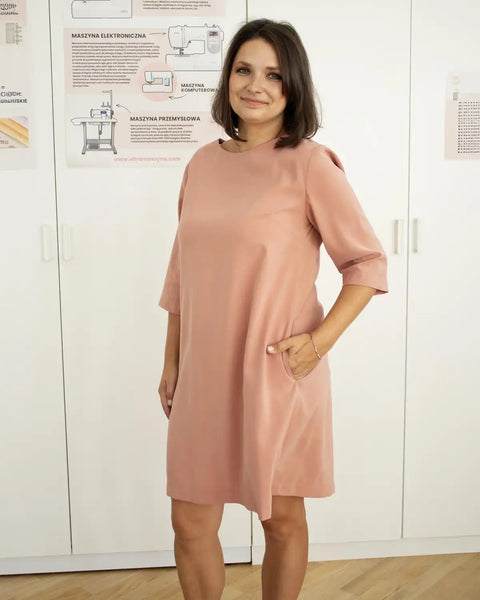

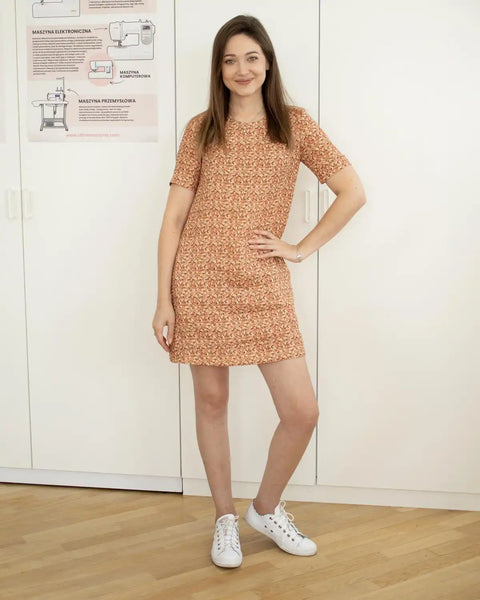
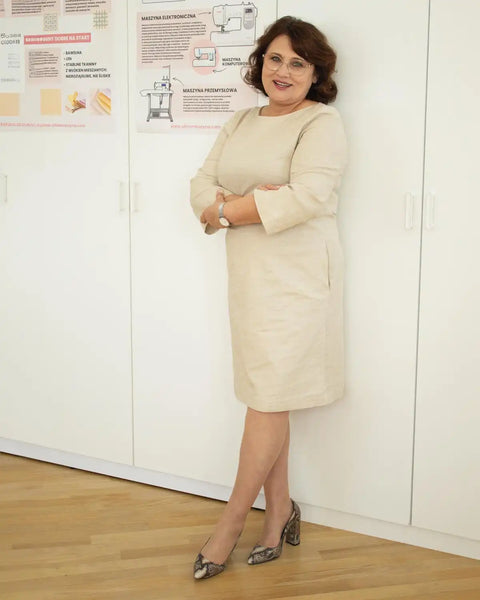

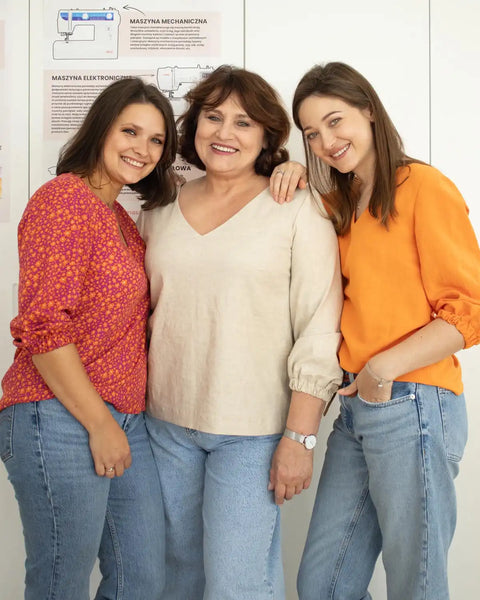
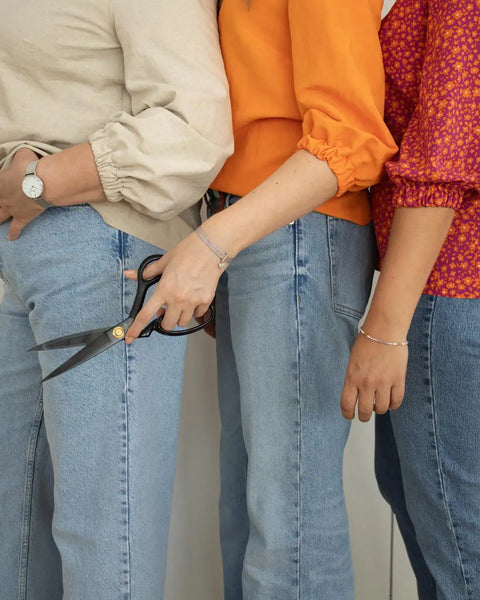
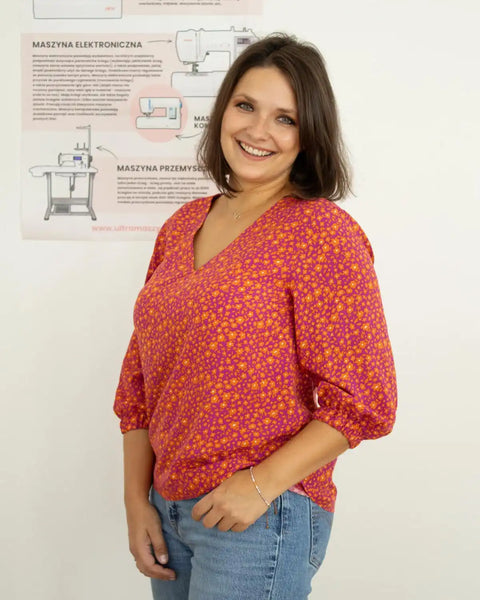
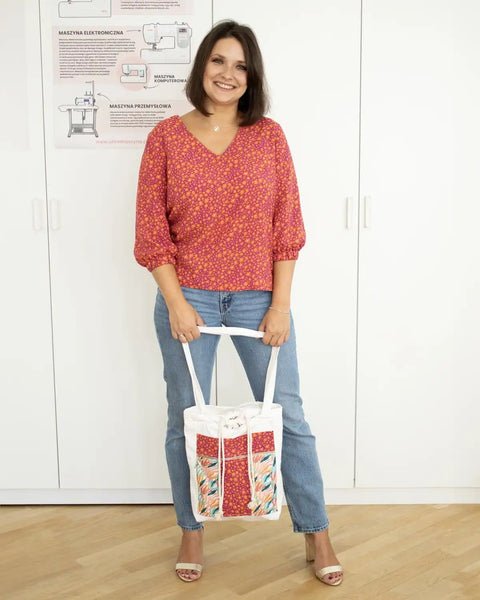


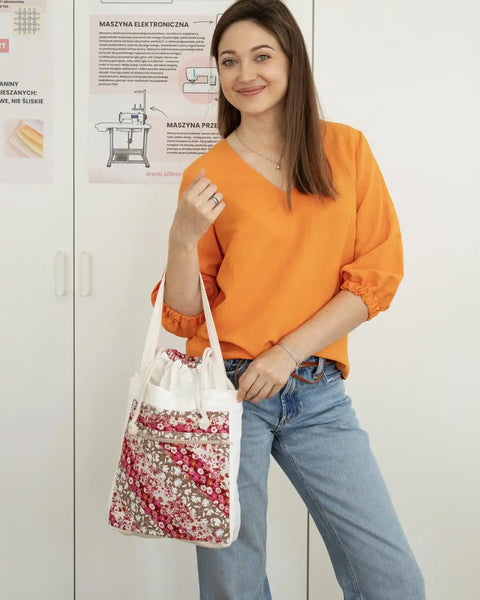

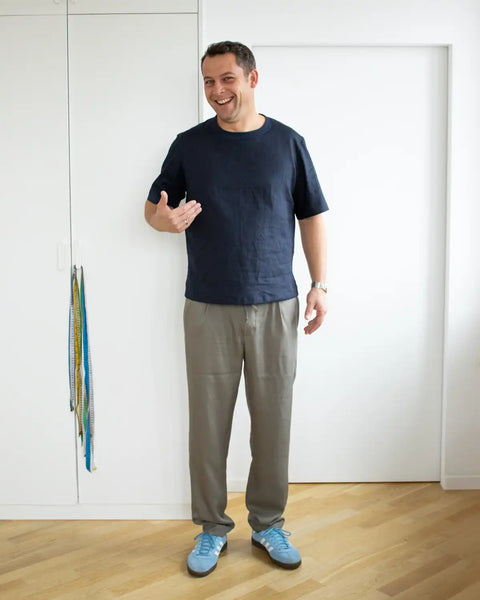
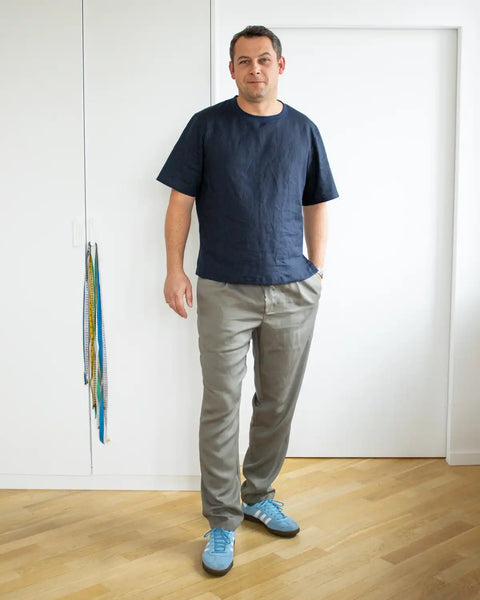
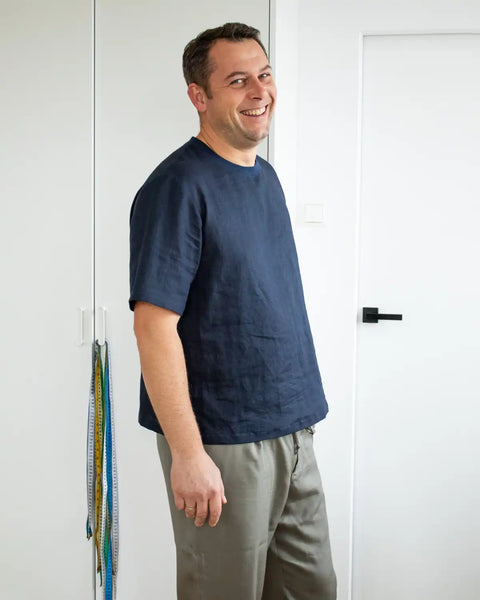

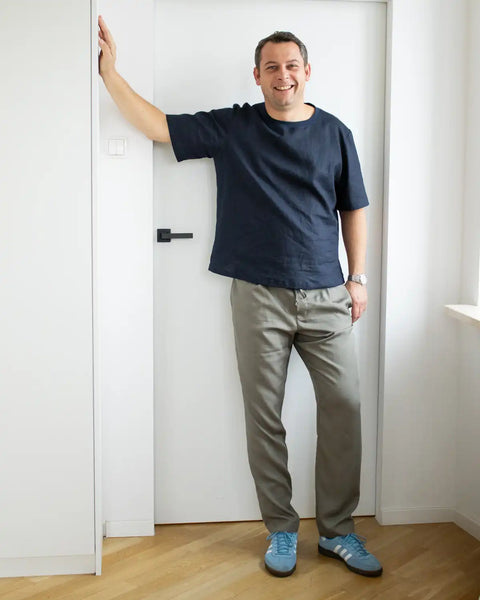



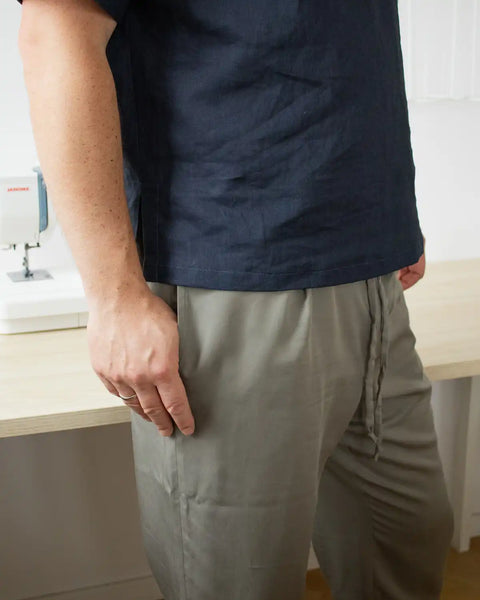


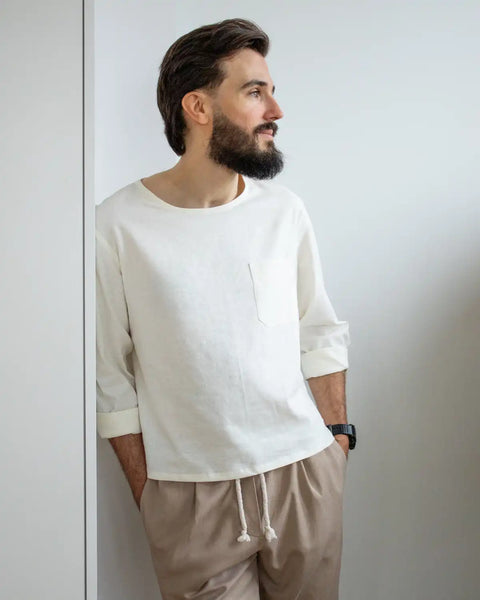

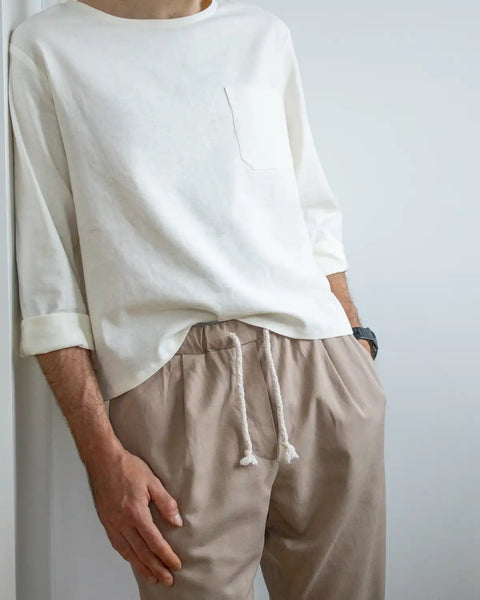


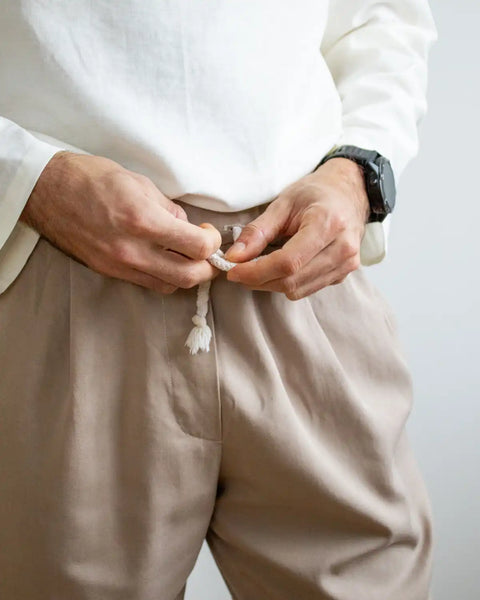


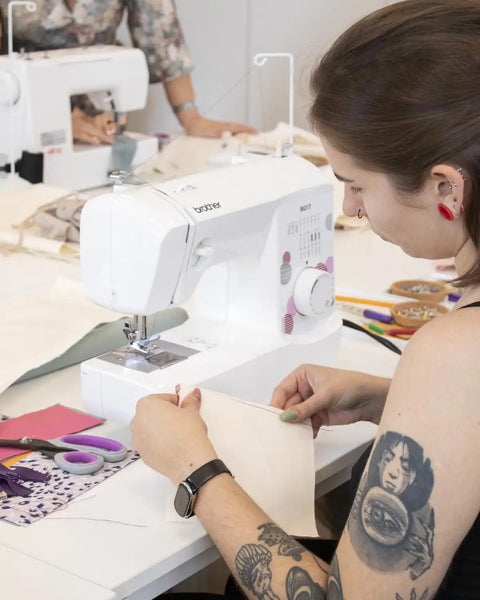

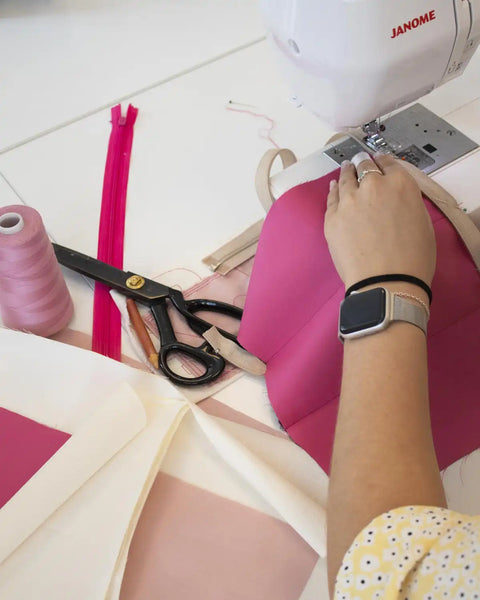





Sewing Course for Beginners
Master sewing to the level where you can start sewing a variety of garments on your own! This course is a well-crafted, comprehensive step toward creating your handmade wardrobe.
You don't need to own a sewing machine! During the course, we provide over 30 models of mechanical, electronic, and computerized sewing machines, as well as overlock machines. Materials for individual sewing projects are also included in the course price – our workshop boasts a rich selection of fabrics available to participants. :)
The course begins with the absolute basics – we’ll familiarize you with the sewing equipment, how to operate it, and how to fully utilize its potential. We’ll show you how to choose the right size for your clothing and make any necessary adjustments for specific body shapes. We'll answer all your pressing questions about fabric selection and share sewing tricks to help you work faster and more efficiently while tackling various challenges. All theory will be effectively reinforced through practice!
During the sessions, you'll start with basic sewing exercises, practice different types of machine stitches, and, under the guidance of our instructor, create unique projects:
FOR WOMEN:
- A shopper bag with a decorative patchwork panel,
- A V-neck blouse,
- An A-line dress with a concealed zipper.

FOR MEN:
- A shopper bag with a decorative patchwork panel,
- A blouse finished with a binding,
- Jogger pants.

Included in the Course Price:
- A selection of materials, sewing accessories, a sewing machine, scissors, needles – in short, everything you’ll need to complete your projects. You don’t need to bring anything with you to the classes.
- Sewing patterns for projects in sizes 34-42, as well as plus-size options in sizes 44-54.
- Dedicated instructor support – during the course, your instructor is available to assist you, and even after the course, we offer continuous support to answer any questions you may have.
- Unlimited access to the kitchen: coffee and a variety of teas are available!
- Advice on materials and machines in the shop area: the shop staff are always happy to help you select the best tools and fabrics to fully apply your newfound skills at home.
- Access to materials after the course – step-by-step sewing guides with photos and descriptions, plus resources to review what we covered in class.

Who Is This Course For?
This course is designed for individuals who have never used a sewing machine before or who have only basic knowledge and skills in tailoring. Is this course suitable for complete beginners? The answer is: absolutely, yes! :)
You can find a photo gallery, detailed course program, and the schedule for each group below (in the tabs).
To view the class dates, first select the group with a start date that works for you. Then scroll down – in the "Meeting Schedule" tab, you can check the specific dates for your chosen group.
Kontakt
+48 881 22 33 93 (sklep internetowy)
+48 881 61 63 61 (kursy)
Administratorami Twoich danych są ULTRAMASZYNA Sp. z o. o. oraz ULTRA Sp. z o. o., których łączy umowa współadministrowania.Kliknij i dowiedz się więcej o ochronie Twoich danych, a zwłaszcza celach przetwarzania i Twoich prawach.
Sklep
Kursy
Informacje
Wspieramy płatności i dostawy



123 John Doe Street
Your Town, YT 12345
Store Hours
Sun: Closed
Mon-Fri: 9:00 - 17:00
Sat: 10:00 - 13:00
What to expect at pickup
Closed
Closing at 5pm
Closing at 5pm
Closing at 5pm
Closing at 5pm
Closing at 5pm
Closing at 1pm
